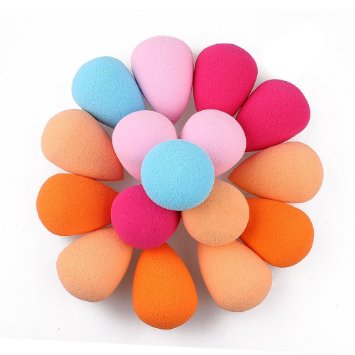When you want your makeup products to look natural and set a perfect foundation, you need the correct tools to apply your makeup. Makeup sponge manufacturers believe that other applicators provide a smooth finish like brushes work well if you need a full-coverage look. But for the most airbrushed, natural finish, a makeup sponge is ideal.
A makeup sponge is a little absorbent applicator that can apply and blend concealer, foundation, cream-based products, and some face powders over the skin. Sponges are obtainable in various shapes, materials, and sizes, letting you select the best option based on the area of the face you’re applying makeup to and the type of texture you want. Some makeup sponges are usually mixed up after one use, while others can be cleaned and reused for three months.
Not sure which makeup sponges to select? This purchasing guide covers all the features and materials you can use to have the ideal makeup sponges for your makeup routine. For headache-free shopping, please take a look at our specific product recommendations.
What are the makeup sponges composed of?
Makeup sponges are composed of a variety of materials, which all do their job slightly differently:
- Latex foam is the most common material that makeup sponge manufacturers use in making makeup sponges. Many users choose sponges composed of latex foam because it’s not as absorbent as other substances, so it doesn’t soak up the base or foundation and other liquid makeup products as quickly as other blenders. However, they transfer most of the cosmetic products like foundation and concealer directly to your face. Though, they’re not any choices if you have a latex allergy.
- Hydrophilic polyurethane is a standard substantial for innovative makeup sponges. Contrasting latex sponges, designed not to engross liquid products, these sponges have more giant cells, so they’re more permeable and readily grip liquid. You can dampen these sponges before use, as when they absorb water, they don’t soak up as much cosmetics. Also, this Hydrophilic polyurethane is ideal for individuals who have latex allergies as they are latex-free.
- Silicone is another valuable material for making makeup sponges because it’s much less absorbent than other materials. Also, they are easy to clean and soak less water as compared to others. However, you risk applying too much base or concealer with a silicone sponge because it doesn’t engross excess makeup. However, the performance of these sponges is not up to the mark as latex and hydrophilic polyurethane sponges.
Two Varieties Of Makeup Sponges
Disposable Vs. Reusable
Disposable: Many disposable makeup sponges are usually for one-time use. So, throw these sponges. You can use it and throw it away as they are highly attracted to dirt and bacterias. Also, they are inexpensive and need to be replaced after frequent use.
Reusable: the sponges which can be reused are a little bit costly. But they are highly effective and clean with soap and water. So, you can reuse them easily without any concerns.
Wet vs. dry use
Makeup sponges can either be applicable when wet or dry. The damp sponge is compelling as they absorb less makeup product and give a smooth and perfect finish. However, the dry sponge absorbs more makeup and doesn’t provide the finish like the wet.



